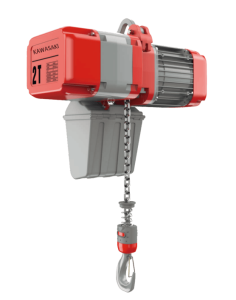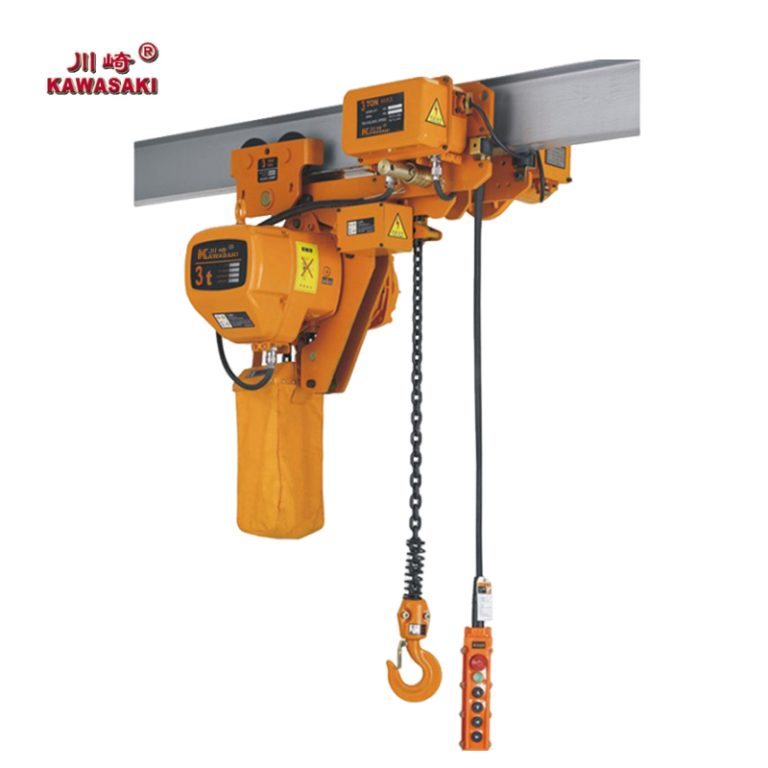Introduction
In developing countries, industries are often reliant on labor-intensive methods to perform critical operations such as lifting, moving, and assembling materials. Manual hoists have long been a common tool due to their low cost, mechanical simplicity, and minimal energy requirements. However, as global markets push for greater productivity, safety, and integration with modern technologies, electric chain hoists are becoming more prevalent—even in cost-sensitive environments.
This shift from manual to electric hoists is not merely a technological upgrade. It carries wide-ranging socio-economic implications, especially in regions where employment is labor-intensive, infrastructure is uneven, and affordability is a key constraint. This essay explores the multifaceted impacts of replacing manual hoists with electric chain hoists in developing nations, examining both the potential benefits and the challenges that such transitions entail.
1. Increased Productivity and Efficiency
One of the most immediate and measurable impacts of switching to electric chain hoists is increased operational efficiency. Electric hoists can lift heavier loads at faster speeds with less human intervention compared to manual hoists. This productivity gain is particularly important in industries such as construction, mining, manufacturing, and warehousing.
Key Efficiency Benefits:
-
Time savings: Tasks that once took hours with manual labor can be completed in minutes.
-
Reduced fatigue: Electric operation eliminates physical strain, allowing workers to perform longer without exhaustion.
-
Consistency: Machines perform tasks with consistent speed and precision, reducing variability and errors.
While these gains may translate into higher profits and faster growth for companies, they can also result in reduced reliance on manual labor—a significant concern in labor-surplus economies.
2. Employment Displacement and Labor Concerns
In regions with high unemployment rates and large informal labor sectors, introducing automation through electric hoists may displace low-skilled workers. Manual hoisting tasks are often performed by unskilled or semi-skilled laborers who rely on such jobs for livelihood.
Potential Negative Impacts:
-
Job Losses: As electric hoists reduce the need for human muscle power, some roles may become redundant.
-
Skill Mismatch: Workers may lack the technical skills needed to operate or maintain electric hoists, leaving them at a disadvantage in the new job landscape.
-
Wage Pressure: Automation often leads to a polarization of wages, with skilled technicians earning more and manual workers earning less or losing employment.
However, these impacts are not inevitable. With strategic planning and investment in training, the transition can open new employment avenues in operation, maintenance, repair, and system integration.
3. Workplace Safety and Health Improvements
One of the strongest arguments for electric chain hoists is their potential to improve workplace safety. Manual hoisting tasks carry a high risk of musculoskeletal injuries, strains, and even fatalities in extreme cases.
Health and Safety Advantages:
-
Load control: Electric hoists often include features such as limit switches, emergency stops, and overload protection.
-
Ergonomics: Reduced physical strain leads to fewer injuries and long-term health problems.
-
Accident reduction: Mechanized lifting reduces human error, lowering accident rates.
For employers, this means fewer compensation claims and lower insurance costs. For workers, it can lead to a safer, more sustainable working environment, albeit one that may require technical upskilling.
4. Economic Growth and Industrial Competitiveness
Electric chain hoists contribute to improved productivity, which can boost the competitiveness of local industries in developing countries. This is particularly critical for countries aiming to participate in global supply chains or expand their industrial sectors.
Growth Catalysts:
-
Higher output: Faster and more reliable production processes can meet higher demand and reduce lead times.
-
Export potential: Quality improvements and compliance with international safety standards can open new markets.
-
Attracting investment: Technologically advanced and efficient operations attract foreign direct investment and joint ventures.
When deployed strategically, electric hoists can thus play a role in modernizing industries and supporting broader economic development goals.
5. Cost Implications and Affordability
While electric chain hoists offer many long-term benefits, their initial cost remains a significant barrier in developing countries. The equipment itself is more expensive than manual hoists, and installation may require additional infrastructure such as electricity, mounting supports, or automation systems.
Financial Considerations:
-
Upfront cost: Purchasing electric hoists can be several times more expensive than manual alternatives.
-
Operational costs: Electricity, maintenance, and potential downtime due to breakdowns must be accounted for.
-
Return on investment (ROI): For small businesses, calculating ROI can be challenging, especially when profits are already slim.
To overcome these hurdles, governments, NGOs, and industry groups may need to provide subsidies, financing options, or cooperative ownership models to improve access.
6. Environmental and Energy Implications
Electric chain hoists rely on electricity, which may be a limiting factor in rural or underdeveloped areas with unreliable power grids. Nonetheless, they typically consume less energy relative to the human output required for equivalent manual labor, and they can be integrated into energy-efficient systems.
Environmental Factors:
-
Energy dependency: Frequent blackouts or lack of grid access can hinder performance.
-
Carbon footprint: In regions where electricity is coal-based, increased usage may raise emissions.
-
Sustainable practices: When powered by renewable energy or integrated into smart grids, electric hoists can align with green industrialization goals.
Energy infrastructure must evolve alongside automation to ensure reliable and sustainable deployment.
7. Education and Workforce Development
The shift from manual to electric lifting systems necessitates investment in education and training. This can be a socio-economic opportunity if managed properly.
Skill Development Opportunities:
-
Vocational training: New programs can teach workers to operate, maintain, and repair electric hoists.
-
Certification systems: Recognized qualifications can improve employability and mobility.
-
Technological literacy: Broader exposure to automation can prepare the workforce for future industrial changes.
By reframing automation as a chance for advancement rather than a threat, communities can foster resilience and inclusion.
8. Infrastructure and Urban-Rural Divide
Electric chain hoists require stable infrastructure—particularly electrical power and secure mounting systems. In many developing nations, urban areas are better equipped than rural regions.
Disparities to Consider:
-
Urban bias: Industries in cities benefit more from electric hoist deployment, widening the development gap.
-
Limited adoption in rural areas: Manual hoists may remain prevalent in regions without access to reliable electricity or technical support.
-
Decentralization strategies: Introducing off-grid power solutions, such as solar-powered hoists, can help bridge this divide.
Policymakers must address these disparities to ensure equitable access and benefits across all regions.
9. Cultural and Social Resistance
Changes in technology often encounter resistance, particularly when livelihoods or traditional ways of working are at stake. In developing countries, cultural acceptance plays a vital role in successful adoption.
Resistance Factors:
-
Fear of job loss: Workers may see automation as a threat rather than an opportunity.
-
Trust in technology: Skepticism about reliability or relevance can delay adoption.
-
Community dynamics: In tightly knit labor groups, changes may be resisted collectively.
Engaging communities, offering demonstrations, and involving workers in the transition process can reduce resistance and foster buy-in.
10. Policy and Institutional Support
The pace and impact of automation in lifting operations are strongly influenced by policy frameworks. Governments and institutions play a central role in ensuring the transition is inclusive and beneficial.
Policy Instruments:
-
Subsidies and tax incentives: Reduce the cost burden for small and medium-sized enterprises (SMEs).
-
Regulatory standards: Ensure safety and performance compliance for imported and domestic electric hoists.
-
Labor policies: Support displaced workers through retraining programs and social safety nets.
With proactive governance, the introduction of electric chain hoists can align with national development goals and improve socio-economic outcomes.
Conclusion
The replacement of manual hoists with electric chain hoists in developing countries is a complex but inevitable trend, driven by global industrial modernization and safety demands. While the transition offers significant benefits in terms of productivity, safety, and economic growth, it also poses serious challenges—particularly for labor, affordability, and equitable access.
To ensure that the change leads to inclusive and sustainable development, it is essential to invest in workforce upskilling, infrastructure, and supportive policies. By doing so, developing countries can transform potential disruption into opportunity—ushering in a more modern, efficient, and resilient industrial future.




